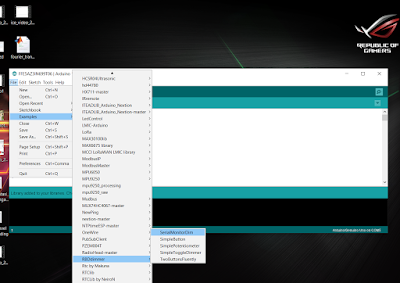Program Language
Programming languages
What is a Program Language?
Program language is a set of instructions given to the computer to be able to carry out certain tasks in solving a problem. Program language serves to command the computer so that it can process data according to the completion steps that have been determined by the programmer. This language allows a programmer to specify exactly which data will be processed by the computer, how this data will be stored/forwarded, and what kinds of steps will be taken in various situations exactly.Program Language Functions
The main function of a programming language is as a tool to give commands to the computer so that it can move to process words according to what you want. The output of the program language itself can be in the form of an application or a special program. The development of the language of this program certainly creates various technological innovations that help people in their daily lives. For example, traffic light programs on the road, cash registers, game applications, anti-virus, web, social media, and so on.
Program Language Level
1. Low-Level Program Language
Low-level programming language contains instructions addressed to the computer using binary code (binary). The codes will be directly translated by the computer without having to go through the compilation process.
2. Intermediate Program Language (Mid-Level)
Middle-level programming languages are instructions in the form of mnemonic codes such as ADD, SUB, DIV, STOLOD, JMP and others. However, the language in this intermediate level must be translated into machine language first, because the computer only understands the use of machine language.
3. High-Level Program Language
This high-level programming language contains instructions that use natural languages that humans understand, such as English or mathematics. This level was created to overcome the shortcomings of the middle and low levels.
Program Language Example
- HTML/CSS: The foundation of a web program. To create a static website, you need HTML/CSS language.
- JavaScript: One of those languages that is quite easy to learn and can be used for anything like validating form data to developing games. JavaScript is a very popular way to add interactive features in web pages and applications.
- PHP: The programming language used to develop dynamic web pages. Learning PHP will be very useful for website owners because PHP can shorten the code in a web page so that it can fit into a set of rules.
- C++: C++ is now widely used in a wide variety of applications. C++ also has the advantage that it is easier to learn other C languages such as C# and C. All C languages are generally viewed as mid-level programming languages.
Program Language Generation
- First Generation: Is a programming language that was first created in the 1940s and early 1950s namely Machine Language or Machine Language. Machine language is an internal computer program that performs commands directly without translation.
- Second Generation: In this generation, computers have been used commercially and produce Assembly Language which is the successor of the first generation.
- Third Generation: Because the use of machine language and assembly language is too difficult, then third-generation languages (3GLs) are born which are considered easier to program and portable. This programming language is called a high-level programming language because it is easy to learn and there is a fairly complicated computer translation process. Examples of third generation programming languages such as FORTRAN, Cobol, Pascal, Basic, etc.
- Fourth Generation: Program languages in the fourth generation are also easy to understand and learn and are suitable for accessing databases. This programming language focuses on maximizing human productivity and is available in software packages that are useful for developing desired applications. Examples such as SQL, LISP, and Prolog.
- Fifth Generation: The programming language is Programing Language Based Object Oriented and Web Development. Often used to access databases and create expert systems or knowledge-based systems.







0 Comments